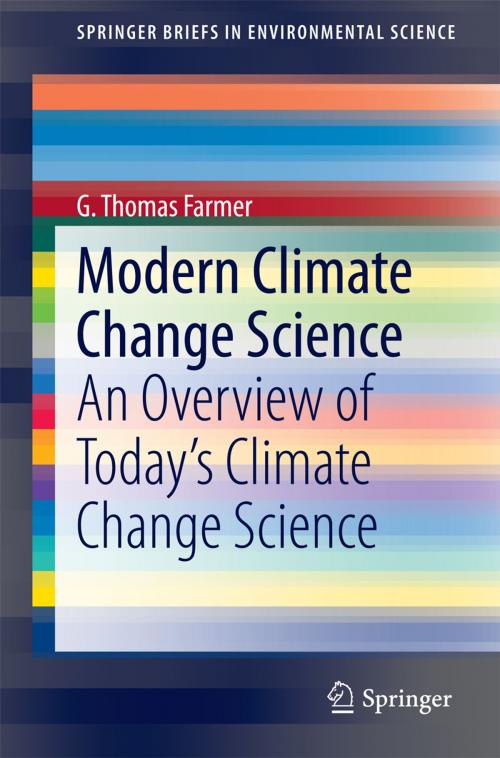Modern Climate Change Science
An Overview of Today’s Climate Change Science
Nonfiction, Science & Nature, Science, Other Sciences, Meteorology, Biological Sciences, Environmental Science, Nature| Author: | G. Thomas Farmer | ISBN: | 9783319092225 |
| Publisher: | Springer International Publishing | Publication: | August 11, 2014 |
| Imprint: | Springer | Language: | English |
| Author: | G. Thomas Farmer |
| ISBN: | 9783319092225 |
| Publisher: | Springer International Publishing |
| Publication: | August 11, 2014 |
| Imprint: | Springer |
| Language: | English |
Composed of two extensive sections, this book surveys important work in climate change science, mainly in the United States, and introduces contributions to the body of science that have arrived on the scene between January 2013 and February 2014.
The opening section offers a broad examination of contemporary climate change science, with subsections on the Intergovernmental Panel on Climate Change (IPCC); Earth’s energy imbalance and energy flow; carbon dioxide’s role in the greenhouse effect; climate forcing, and climate feedbacks; Charles David Keeling and the Keeling Curve; the interfaces of atmosphere with oceans and land; paleoclimates and paleoclimatology; rising sea level; melting glaciers; deforestation; desertification; more violent storms, animal and human migration, extinction of species and more.
The second section reviews and assesses the newest contributions to the body of research. Among the topics discussed are current and recent research on rising temperatures; the BEST study; the Global Historical Climatology Network (GHCN) and the National Climatic Data Center (NCDC); current and recent research on climate models, new research on global warming 56 million years ago; ecosystem impacts, projections of future climate and more.
This book can be considered a bridge between the volumes of Farmer and Cook’s Climate Change Science: A Modern Synthesis, as it arrives between the release of the first volume on the Physical Climate (2013) the second, on Earth’s climate history, which is now in preparation.
The book benefits a wide audience as its survey of the science of climate change provides an introduction to the subject and a discussion of current research in the field. The book may be used as a refresher for those who have had prior courses in climate science and related fields. Each chapter includes a comprehensive list of references for subjects discussed in the text.
Composed of two extensive sections, this book surveys important work in climate change science, mainly in the United States, and introduces contributions to the body of science that have arrived on the scene between January 2013 and February 2014.
The opening section offers a broad examination of contemporary climate change science, with subsections on the Intergovernmental Panel on Climate Change (IPCC); Earth’s energy imbalance and energy flow; carbon dioxide’s role in the greenhouse effect; climate forcing, and climate feedbacks; Charles David Keeling and the Keeling Curve; the interfaces of atmosphere with oceans and land; paleoclimates and paleoclimatology; rising sea level; melting glaciers; deforestation; desertification; more violent storms, animal and human migration, extinction of species and more.
The second section reviews and assesses the newest contributions to the body of research. Among the topics discussed are current and recent research on rising temperatures; the BEST study; the Global Historical Climatology Network (GHCN) and the National Climatic Data Center (NCDC); current and recent research on climate models, new research on global warming 56 million years ago; ecosystem impacts, projections of future climate and more.
This book can be considered a bridge between the volumes of Farmer and Cook’s Climate Change Science: A Modern Synthesis, as it arrives between the release of the first volume on the Physical Climate (2013) the second, on Earth’s climate history, which is now in preparation.
The book benefits a wide audience as its survey of the science of climate change provides an introduction to the subject and a discussion of current research in the field. The book may be used as a refresher for those who have had prior courses in climate science and related fields. Each chapter includes a comprehensive list of references for subjects discussed in the text.















